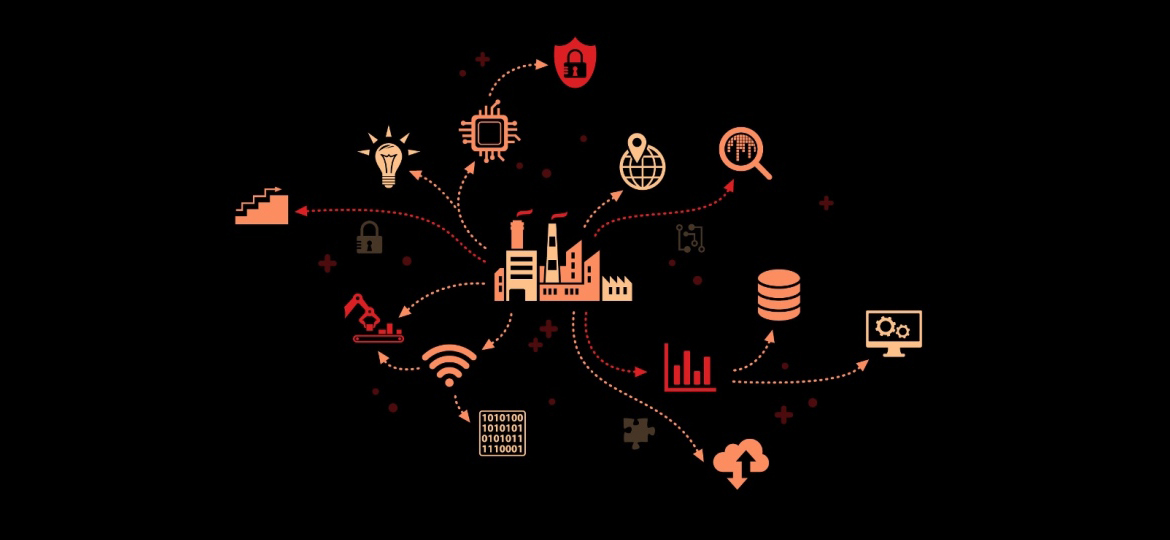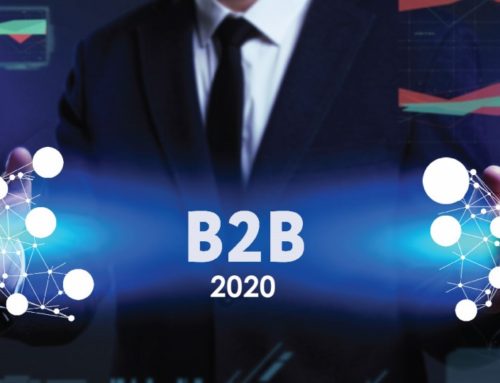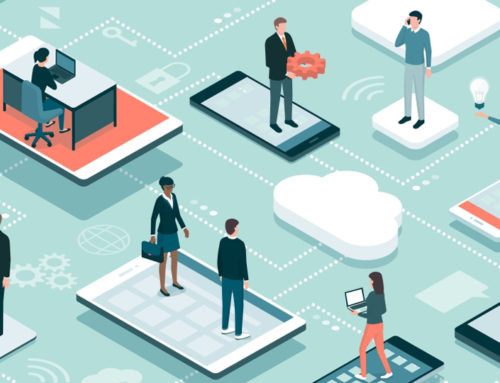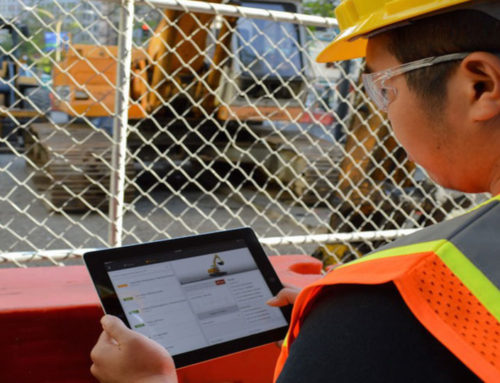While the world continues to live under threat of uncertainties arising because of the COVID-19 outbreak, its impact on machinery maintenance in Industrial sector is unimaginable. We all know that COVID-19 can stay for hours on surfaces, so out of our home we have to struggle to not touch anything. How can IoT and AI help with this issue in Industrial machinery maintenance segment which involve large amount of service engineers intervention and routine check-up physically at site ? Of course, the technologies that support remote working and track distance can also help with contactless transactions as many tasks and processes can be automated. There are many rules related to physical distance and hygiene as well as limitations which still force the end user to ask their supplier to give service from isolated location remotely to avoid potential spreading of corona virus. Of course, these rules are more than necessary so we can avoid the second wave of the pandemic, but there are some key concerns for companies and service providers. For example:
- How can companies can start offering their services, while sitting at their own office located far away from the site?
- How can customers or employees operate out of their safe machine with confidence, without touching surfaces and keeping distance from each other and machine?
IoT is a network of connected devices that can communicate with each other, exchange data and provide automation of tasks. We can use IoT to sense (collect data through sensors) and Artificial Intelligence (AI) to make sense out of this data. The new name of this convergence is the AI of Things (AIOT).
What is IIoT?
IIoT stands for the Industrial Internet of Things or Industrial IoT that initially mainly referred to an industrial framework whereby a large number of devices or machines are connected and synchronized through the use of software tools and third platform technologies in a machine-to-machine and Internet of Things context, later an Industry 4.0 or Industrial Internet context.
With a strong focus on machine-to-machine (M2M) communication, big data, and machine learning, the IIoT enables industries and enterprises to have better efficiency and reliability in their operations. The IIoT encompasses industrial applications, including robotics and software-defined production processes.
In the context of the fourth industrial revolution, dubbed Industry 4.0, the IIoT is integral to how cyber-physical systems and production processes are set to transform with the help of big data and analytics. Real-time data from Monitoring Systems and other information sources helps industrial devices and infrastructures in their “decision-making,” in coming up with insights and specific actions. Machines are further enabled to take on and automate tasks that previous industrial revolutions could not handle. In a broader context, the IIoT is crucial to use cases related to connected ecosystems or environments, such as how industries become smart industries and factories become smart factories.
How IoT works?
An IoT ecosystem consists of web-enabled smart devices that use embedded systems, such as processors, Monitoring Systems and communication hardware, to collect, send and act on data they acquire from their environments. IoT devices share the Monitoring System data they collect by connecting to an IoT gateway or other edge device where data is either sent to the cloud to be analysed or analysed locally. Sometimes, these devices communicate with other related devices and act on the information they get from one another. The devices do most of the work without human intervention, although people can interact with the devices — for instance, to set them up, give them instructions or access the data.

The connectivity, networking and communication protocols used with these web-enabled devices largely depend on the specific IoT applications deployed.
IoT can also make use of artificial intelligence (AI) and machine learning to aid in making data collecting processes easier and more dynamic.
How IIoT benefits to predictive & self-maintenance?
The industrial internet of things offers several benefits to an organizations using various industrial heavy machineries. The major challenge to an fleet owners is to up keep of equipment by using very less or, nil manpower. The IIoT majorly impact on the predictive maintenance based on condition based monitoring from the remote place. After supply of a machine to the customer site, lot of operations are involved e,g; installation, commissioning, maintenance etc. IoT enabled smart device mounted on the machine to monitor critical parameters may bring self-diagnostic features of a machine. Here we are giving an example of implementation of IoT on a Roll crusher to monitor it’s performance and also giving maintenance support remotely by the help of smart devices and cloud services.
- Case study on Roll crusher :
Roll Crusher is a type of crusher which is majorly used in various application in Mines, Aggregates etc. It is necessary to monitor various parameters, e.g; gap in rolls after certain period of operation, particle size etc. In today’s world, IoT plays a major role towards Conditioned based monitoring vide advanced technology by using IT. It is suitable for crushing different types of material & hard mineral featuring the latest technology. In readily available crushers in market, can be used for crushing a fixed size element and have a fixed size gap between the rollers and it can’t detect the aging of the roller surface as well as the gap. It can’t also be varied depending upon customer’s requirement. Eastman has introduced modern day automation into their existing system to make it more reliable and more user friendly & equipped with hi-tech features.
Features:
Our system is embedded with microcontroller unit with various sensors like Gap monitoring, Dual Axis Vibration as well as temperature Sensor.
- Equipped with advance distance measuring sensor for continuous gap monitoring as well as with local Liquid Crystal Display.
- Can provide analog output 4-20mA for client’s SCADA integration.
- Have on board setting switches so that user can adjust the gap as per requirement.
- Have local Alarming system so that when gap crosses threshold limit for a span of time will generate alarm.
- Have local potential free contact as per user requirement (Optional).
- Apart from displaying gap, LCD screen will provide real time data for dual axis vibration & temperature of the crusher bearings.
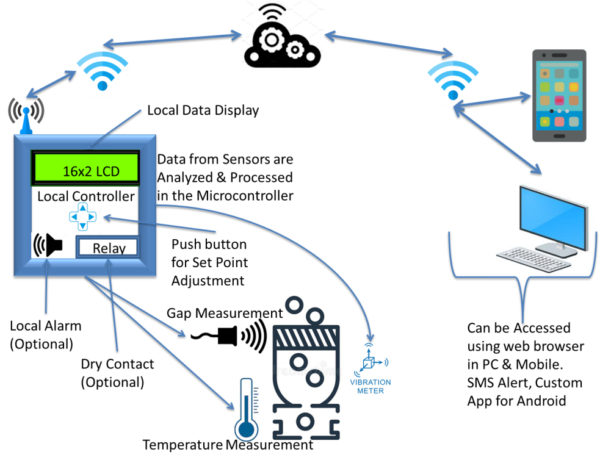
Key Advantages:
- User can always monitor the real time data of the system using personal mobile phone without being physically present at site.
- If there any mechanical fault arises, can be quickly detected by the sensors attached and will generate the alarm (also will alert user through sms) as well as will stop the system automatically to take preventative measures.
- Real time monitoring and data logging will help user to reduce breakdown time as well as will boost system efficiency remarkably.
Connection Diagram:
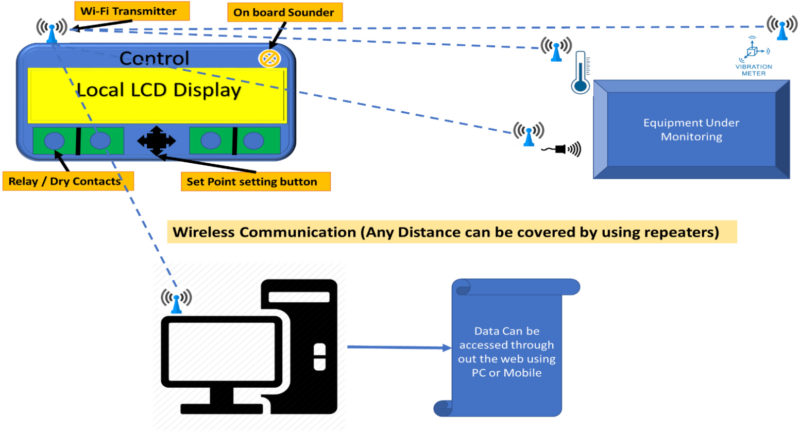
- Some Screenshots of a demo IIoT Web platform for Roll crusher condition monitoring :
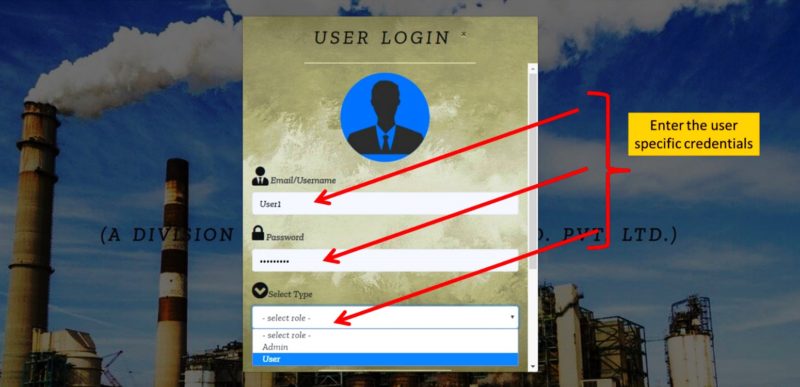
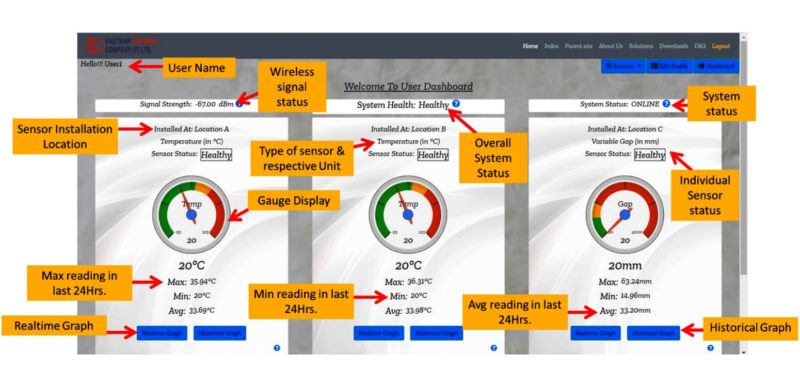
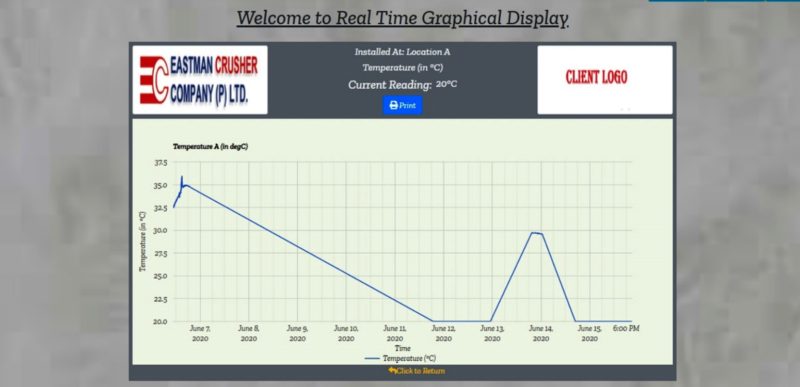
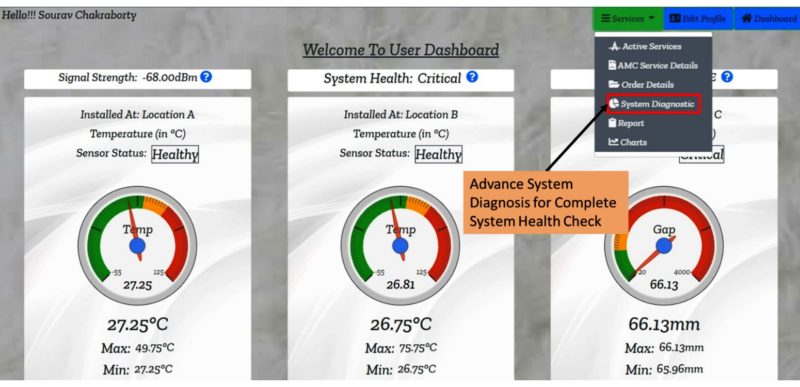
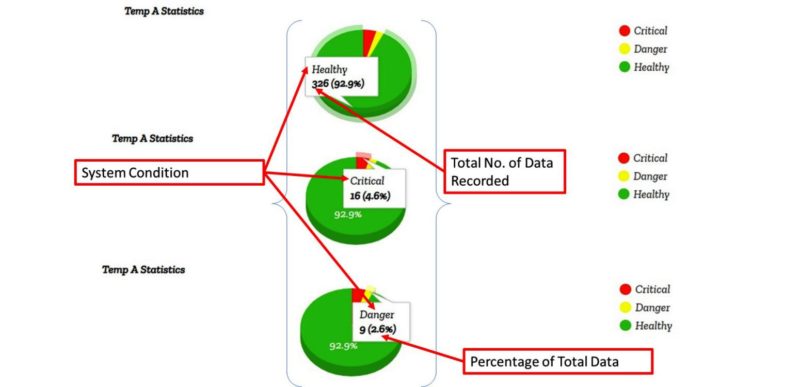
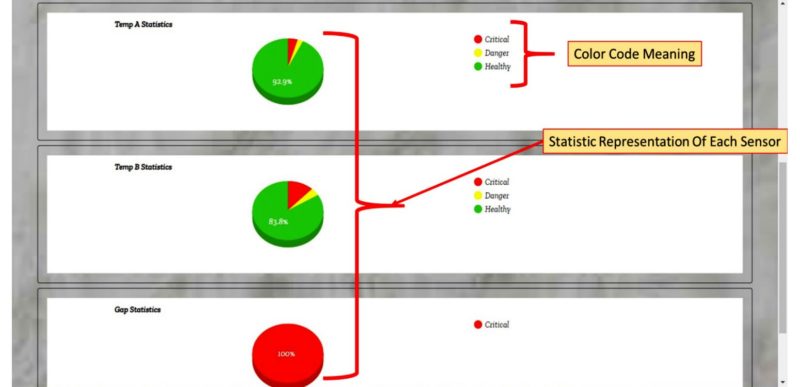
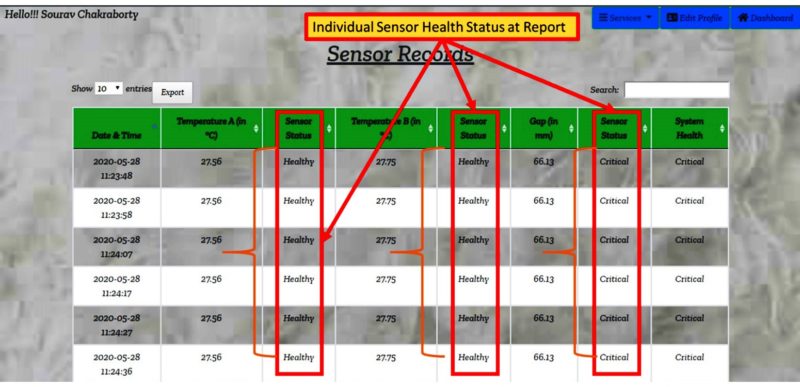
Conclusion:
IoT encourages companies to rethink the ways they approach their businesses and gives them the tools to improve their business strategies. The ability to monitor operations surrounding infrastructure is also a factor that IoT can help with. Monitoring Systems, for example, could be used to monitor events or changes within any machine or equipment. This brings benefits with it, such as cost saving, saved time, quality-of-life, workflow changes and paperless workflow.
IoT evolved from M2M communication, i.e., machines connecting to each other via a network without human interaction. M2M refers to connecting a device to the cloud, managing it and collecting data.
Taking M2M to the next level, IoT is a Monitoring System network of billions of smart devices that connect people, systems and other applications to collect and share data. As its foundation, M2M offers the connectivity that enables IoT.
In summary, the Internet of Things is not anymore a technology of the future and it can really help organisations today to come back to full business stronger than ever. IoT and AI enabled applications can help companies and cities automate processes, track and manage assets from home and create contactless user experience. For even better results and insights, you can later combine it with other technologies like digital twins, AR, VR, and drones. In addition to the Covid-19 health and safety solutions, IoT can improve also sales, cost efficiency and sustainability. We already see acceleration in digital transformation projects due to covid-19 as companies try to adjust to the circumstances of the pandemic.
IoT together with AI are key enablers of this digital transformation. We know that the journey of digital transformation is not easy, but it is necessary to start it and grab the opportunities. A final point to remember is that the above IoT and AI solutions are not useful just during the pandemic, but also beyond.

